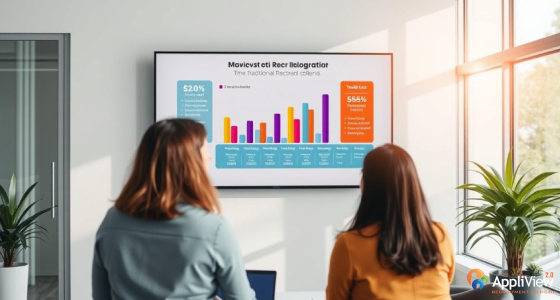Cost-Benefit Analysis: AI Recruitment Tools vs. Traditional Hiring Methods
April 21, 2025

AI recruitment tools are transforming traditional hiring by cutting costs, reducing time-to-hire, and enhancing candidate quality through automation and data-driven processes. Unlike manual methods, AI improves scalability, reduces bias, and increases efficiency. Real-world successes show significant savings and diversity gains. While challenges like upfront costs and ethical concerns exist, the future promises smarter, fairer hiring. A balanced, hybrid approach combining AI with human insight offers the best results.
The Evolution of Recruitment Processes

Historically, recruiting relied on manual screening, labor-intensive processes, and subjective decision-making. HR teams reviewed resumes manually, coordinated interviews through phone calls, and sourced candidates offline. While these methods were effective in the past, they often involved high costs, slow turnaround times, and susceptibility to bias. AI recruitment tools have emerged to address these inefficiencies, using algorithms to automate tasks like resume parsing, candidate sourcing, and interview scheduling, and offering scalability and precision.
Cost-Benefit Analysis AI Recruitment vs. Traditional Methods

- Cost Efficiency : AI tools greatly reduce cost-per-hire by automating repetitive tasks. Organizations experience a 20–50% reduction in hiring costs due to faster operations and less administrative burden. In contrast, traditional recruitment typically averages around $4,700 per hire, escalating with unfilled vacancies and recruiter commissions.
- Efficiency & Time Savings : AI significantly reduces time-to-hire, cutting down time spent on tasks by up to 70%. Traditional recruitment often leads to hiring timelines of 30-60 days, increasing vacancy costs.
- Quality of Hire : AI matches candidates to roles more accurately, minimizing bias and enhancing retention. Traditional methods are often prone to biases and inefficiencies in screening.
- Scalability : AI handles large candidate pools efficiently, supporting organizations in high-demand periods, whereas traditional methods face human resource constraints.
Real-World Applications

Companies embracing AI recruitment tools have reaped considerable benefits. For instance, Unilever cut hiring costs by 50% and improved diversity through AI assessments. Fortune 500 companies reported average savings of $1 million annually, thanks to shortened time-to-hire and enhanced retention. Another case is a cloud-communications provider that used automated referral programs to reduce time-to-fill metrics and boost employee engagement.
Challenges and Critical Viewpoints

While AI recruitment presents compelling benefits, challenges exist, including initial investment costs that may be daunting for smaller companies, ongoing maintenance, and ethical concerns regarding systemic biases in AI. It’s essential to maintain a human touch in recruitment, balancing AI efficiency with interpersonal skills.
Emerging Trends and Future Prospects

Future advancements in AI recruitment tools will include sophisticated natural language processing and predictive analytics, which will enhance candidate matching and reduce turnover risks. Integrated systems will provide comprehensive solutions from sourcing to onboarding, while ethical AI developments focus on mitigating algorithmic biases, promoting fair hiring outcomes.
Key Takeaways

- Cost-Effectiveness : AI enhances lower hiring costs through automation, promising a significant ROI.
- Time Efficiency : Reduced hiring timelines through automation alleviate operational delays.
- High-Quality : Hires Data-driven matches result in better retention and satisfaction.
- Scalability & Adaptability : AI excels in high-volume hiring conditions.
- Balanced Approach : A hybrid method leveraging both AI and human skills yields exceptional results.
Conclusion
As the recruitment landscape evolves, organizations are encouraged to carefully weigh the costs and benefits of AI recruitment tools against traditional hiring methods. While embracing technological advancements, consider integrating human insight to optimize the process.
